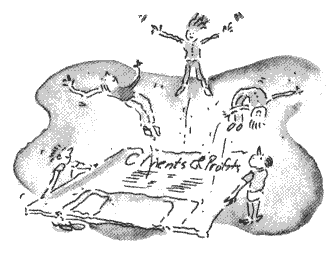
|
Closing the
year |
|
Year-End
Closing Timeline: Closing
day

What
is the close-year procedure doing?
1. Checking
for out of balance entries: Checks
for any out of balance journal entries through period
12. If it finds any it will stop the close year process.
Then you can make any necessary adjusting entries and
then restart the close year procedure.
2. Checking for
unposted JEs in the previous fiscal year: Checks
for any unposted journal entries through period 12. If
it finds any it will stop the close year process. Then
you can post or delete them and restart the close year
procedure.
3. Calculating last
year's net income: Calculates the companies
total profit or loss by adding together all the YTD amounts
for the income and subtracting the YTD amounts for job
costs and expense accounts. It then records that amount
to Retained Earnings.
4. Moving this year's
totals to last year: Takes financial
totals from the year being closed and moves them into
the prior year. It also takes the second years (the new
year) financial totals and moves them into the first
year.
5. Purging last
year's journal entries: Purges all
journal entries from the year being closed.
6. Post beginning
G/L balances: Creates a journal entry
for beginning balances based upon the ending balances
of the assets, liability, and equity accounts of year
being closed.
7. Updating periods
on this year's journal entries: Any
accounting activity (Accounts Payable, Accounts Receivable,
Client Payments, Checks, Journal entries, etc.) in periods
13-24 is moved into periods 1-12.
8. Clearing year-to-date
client, vendor, staff totals: Moves
this years totals for clients,vendors, and staffers to
last year and clears this years totals.
9. Delete inactive
G/L accounts: Any accounts that are
inactive and don't have any balances will be deleted.
10. Check recurring
entries: Changes the period on any
pending recurring payables from 13-24 to 1-12.
|
|
|
| © Clients & Profits, Inc. w
e l o v e a d v e r t i s i n g |
|
|